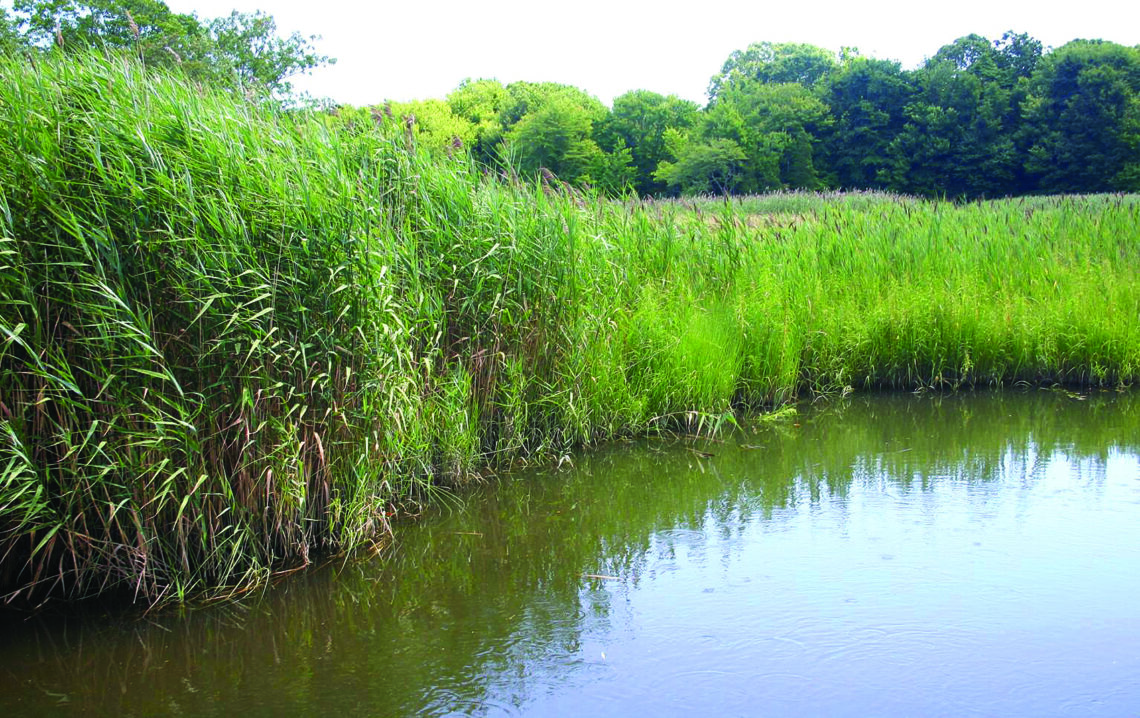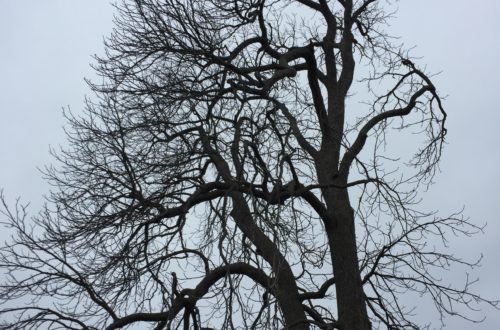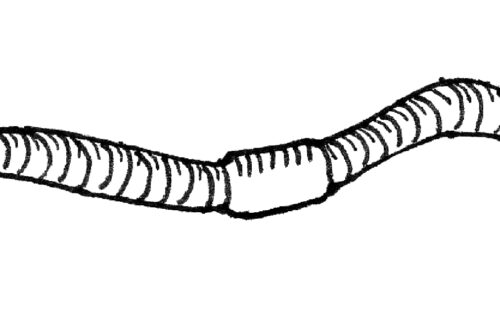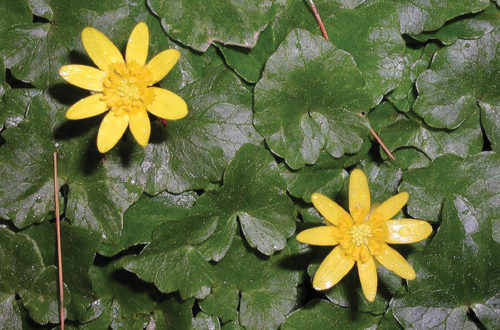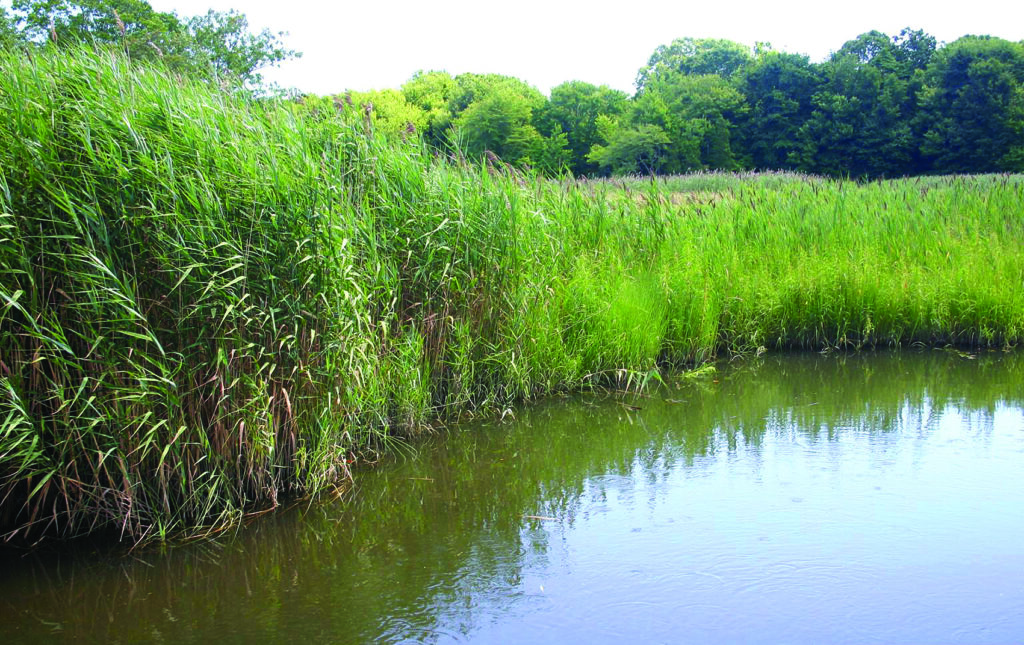
An infestation of Phragmites australis (Common Reed).
Phragmites australis (Common Reed), is neither a reed nor is it from Australia. It’s actually a perennial grass that probably originated in the Middle East. Be that as it may, it is one of the most prolific invasive plants in Connecticut.
Phragmites probably arrived in the United States via Atlantic Coast ports in the late 18th and early 19th centuryalong with ballast in sailing ships. It can now be found in all 48 continental states and large sections of southern Canada.
Common reed can grow to 15 feetor more and puts down deep roots that have spreading rhizomes. It thrives in moist conditions with plenty of direct sun. It’s a fast grower, both above- and below-ground. It can grow in fresh or brackish water. It tolerates saltwater but doesn’t grow as well and the stems can be broken by wave action.
There are currently three types of phragmites in the United States: the native type (Phragmites australis subsp. americanus), the invasive European type (Phragmites australis), and a Gulf Coast type (Phragmites australis subsp. berlandieri) that may have originated in Mexico and/or Central America.
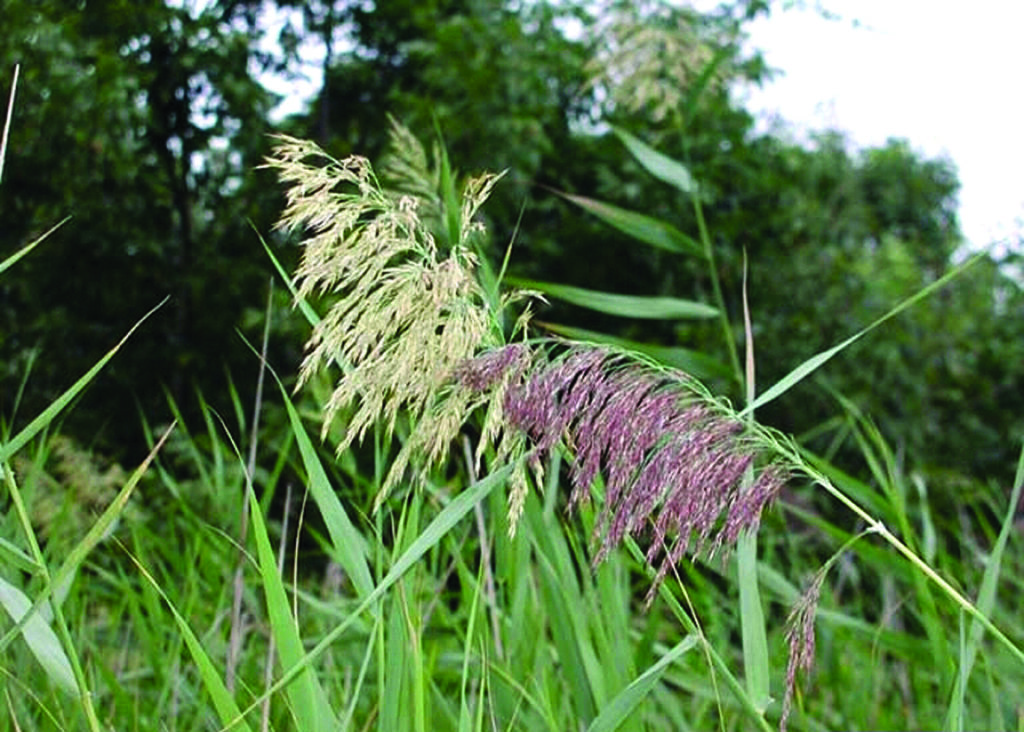
The invader’s plume-like, feathery inflorescences can be purplish or golden.
Native phragmites has been in the U.S. for thousands of years and indigenous peoples used it extensively for everything from flutes to woven mats, arrow shafts and cigarettes. Remains of phragmites from 40,000 years ago have been found in the Southwestern U.S. and in 3000-year-old peat deposits
from Connecticut tidal marshes.
Here’s where things get interesting. Because the morphological differences between the native and the invader are subtle, the invasion went essentially unnoticed.
For this reason, Dr. Kristin Saltonstall at the Smithsonian Tropical Research Institute has called it a ‘cryptic invasion.’ “In Connecticut and Massachusetts, 19th century common reed samples were primarily native haplotypes, but by 1940, all samples were non-native. Local extinctions of native haplotypes are not uncommon.”
Dr. Saltonstall knows Southern New England. Her academic travels took her to Wellesley College, the Yale School of Forestry and Environmental Studies and to Yale University for a PhD in Ecology and Evolutionary Biology.
The Problem
P. australis creates dense monotypic stands that take over wetlands, tidal zones and estuaries. Any moist area is a potential foothold. In the process, it crowds out native species and reduces plant diversity. It’s also a potential fire hazard.
Reproduction
Common reed reproduces by wind-dispersed seeds and vegetatively via rhizomes and stolons, which can reach 40-70 feet in length. Root fragments can also be spread by animals, humans, water, boats and machinery.
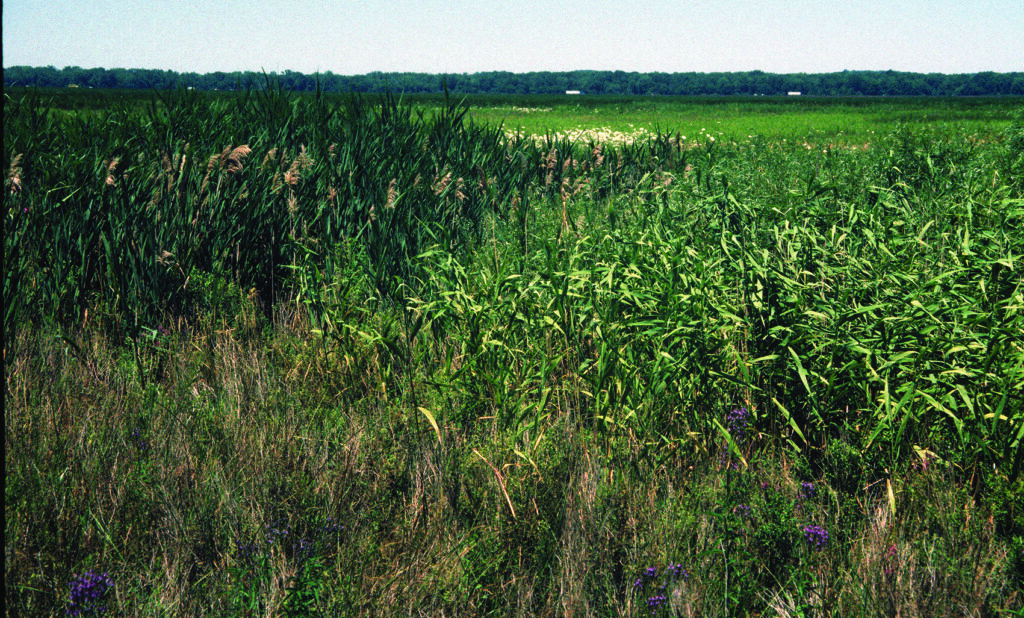
Phragmites australis at the Montezuma National Wildlife Refuge in the Finger Lakes region of New York.
Introduced (on the left) and Native (on the right).
Identification
Invasive phragmites has sturdy stems supporting tapered leaves. The stems (sometimes called culms), are hollow and can reach an inch in diameter. The blue-green-gray leaves are lanceolate and grow to 24 inches in length and up to 1.5 inches in width.
Feathery plume-like inflorescences (flowers) appear on panicles in mid-summer. The panicles, which contain spikelets, range from 6-20 inches long. The flowers start out red/brown/purple but can be golden, fading to tan in the fall.
Although hybridization of the introduced and native type appears to be rare, the morphological differences between the two are subtle and makes distinguishing the them difficult. Due to their visual similarity, genetic testing is the best way to distinguish between the different types.
Subtle Differences
The leaves of native phragmites are yellowish green whereas the invasive’s leaves have a darker bluish color. The ligules (the extension of the leaf sheath at the point where it meets the blade) of the native are twice as wide as those of the invasive. The lower and upper glumes (a leaf-like structure in the inflorescenses of some grasses) are longer on the native. The leaf sheaths of the native are easier to remove and reddish culms are more common in the native variety.
Stands of the native are less dense and may not even appear to be a colony. The stems of the native may have black spots from a fungus that has not yet adapted to the invasive.
As is typical with invasive plants, the growing season of the intruder starts earlier and lasts longer than the native. An excellent field guide created to help people distinguish between the native and introduced varieties can be found at https://bit.ly/31xETiA
Control
If caught early, plants can be cut back and rhizomes dug up. Cut or mow at the end of July and dispose of roots and shoots. Black plastic can be put over the patch after cutting or mowing. This will probably need to be done annually.
Larger infestations require more drastic measures, usually undertaken by professionals, such as the use of specialized herbicides or controlled burns. If chemicals (such as glyphosate) are used, they must be formulations designed for use in or near water and some states require a permit to use herbicides in aquatic environments.
Biocontrol
Two stem-mining moths (Archanara geminipuncta and A. neurica) have been approved for release as a biocontrol. Grazing has not been successful since animals only browse on the above-ground parts of the plant.
– Will Rowlands
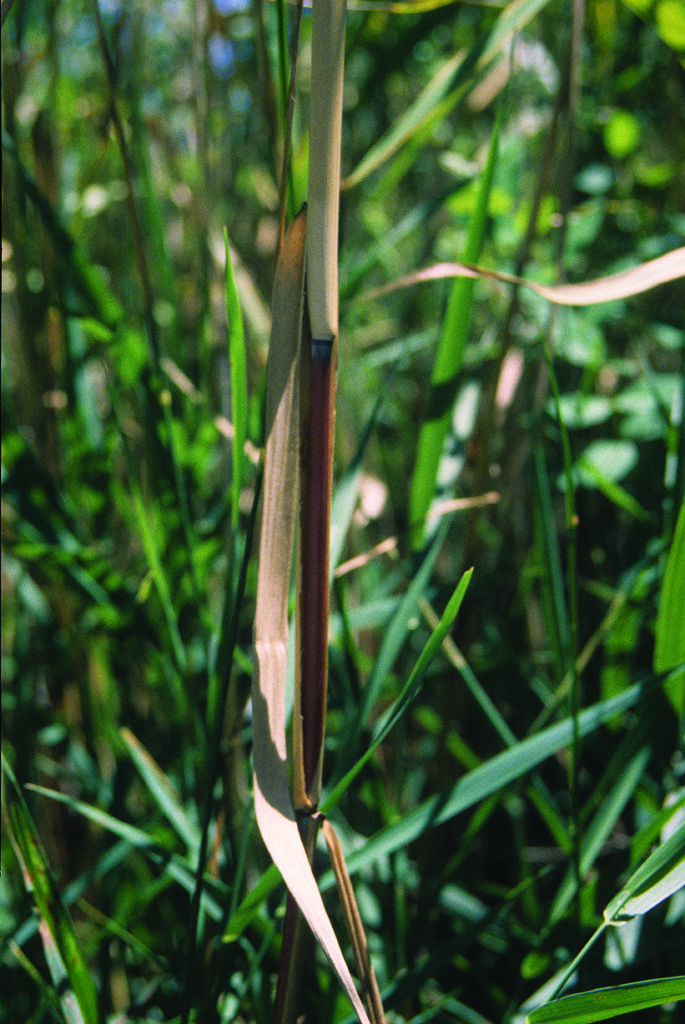
Reddish stems and loose leaf sheaths are typical of native Phragmites in the New England region.
